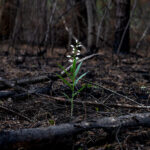Local civilian emergency professionals who react to all “suspicious powder” events – e.g., police/sheriffs/security officers, firefighters, and emergency medical technicians (EMTs)/paramedics as well as members of hazmat and SWAT teams – are not currently immunized against anthrax. But personnel in what might be called “the second wave” of WMD (weapons of mass destruction) responders – i.e., the members of the nation’s Civil Support Teams (CSTs), which are summoned to only a fraction of such events – are vaccinated.
This contradictory order of priorities is not only confusing but also becomes indefensible when one considers the monthly waste of 500,000 expiring doses of anthrax vaccine from the Strategic National Stockpile (SNS). However, there seems to be a growing consensus that now is the time to begin administering the safe, effective anthrax vaccine to emergency responders before exposure/infection.
Since the 11 September 2001 terrorist attacks against the United States there have been numerous improvements in homeland security planning efforts at all levels of government – state and local as well as national. A common theme throughout these strategic plans is the emphasis on response. However, there also are signs that U.S. government officials are striking a more balanced approach between post-attack response and pre-event preparedness. In 2010, for example, the U.S. Centers for Disease Control and Prevention (CDC) published recommendations on use of the anthrax vaccine that support the voluntary pre-event vaccination of emergency responders.
Unsubstantiated Rumors & Irrelevant Calculations
Nonetheless, one year later, hesitancy prevails – possibly because of the mistaken belief of some critics that the risk of an anthrax attack is incalculable (or nil) and/or has been fueled by the rumor – unsubstantiated – that the vaccine itself is unsafe. When considering risk, though, anthrax bioterrorism is not, and should not be considered as, a communicable disease. It is not productive, therefore, to apply the customary epidemiological calculations on risk of infection and impact of immunization – i.e., the force of infection, basic and effective reproductive numbers, average age of those infected at the time of infection, and inter-epidemic period – to an anthrax attack. Instead, anthrax bioterrorism is more logically, and more effectively, assessed as a threat that can and should be calculated as a function of three variables: (a) the probability of danger; (b) the existence of vulnerability; and (c) the degree of impact.
Numerous credible studies and analyses agree that the probability of an anthrax attack is real and continuing. In December 2008, for example, the bi-partisan Commission on the Prevention of WMD Proliferation and Terrorism stressed the importance of enhancing the nation’s capabilities for rapid response to prevent a biological attack – particularly one in which anthrax would be the terrorists’ weapon of choice. On 21 October 2009, the Commission restated its concerns and asserted that anthrax is the most likely near-term threat.
As is stipulated in the U.S. Army’s AVIP (Anthrax Vaccine Immunization Program) plan, the anthrax threat provides the rationale for the routine administration of the anthrax vaccine to U.S.-deployed Department of Defense (DOD) personnel and members of the National Guard’s Civil Support Teams. An additional rationale, if such is needed, is the nagging fact that the United States has already suffered – in the immediate aftermath of the 11 September terrorist attacks – a covert, multi-site, multi-tier, lethal anthrax attack that killed five people, infected or otherwise affected thousands of others, and cost American taxpayers hundreds of millions of dollars.
A Clear and Significant Danger
The current level of vulnerability to anthrax is significant. On 11 December 2002, the Journal of the American Medical Association reported that weaponized anthrax powder quickly dissipates into the invisible, odorless, tasteless, gaseous phase and is easily re-aerosolized.entifying what might be considered a “safe zone” is very difficult, and the personal protective equipment (PPE) currently available is not fool-proof. Six responders to the post-9/11 anthrax attacks were infected, for example, while inspecting the Hart Senate Office Building despite the fact (as was reported in January 2007 by the Journal of Infectious Diseases) that they were wearing hazmat suits at the time.
Of even greater importance is the fact that – as reported in the August 2001 International Journal of Antimicrobial Agents and again in the August 2004 Journal of Antimicrobial Chemotherapy – anthrax can be made resistant to all currently stockpiled antibiotics. Vulnerability is at its greatest in an attack using strains of anthrax that are resistant to the antibiotics currently stockpiled. In this scenario, post-exposure antibiotics afford no protection, and post-exposure vaccine cannot be expected to confer immunity quickly enough to prevent infection.
In terms of the potential impact of a major anthrax attack, a 1970 World Health Organization (WHO) expert committee estimated that an aircraft release of 50 kg of anthrax over an urban population of five million people would result in 250,000 deaths – 38 percent of whom would die without treatment; in addition, another 125,000 people would be severely incapacitated. In 1993, the U.S. Congressional Office of Technology Assessment confirmed the original WHO data. More recent modeling – e.g., the mathematical model published in 2003 in the Proceedings of the National Academy of Sciences – puts the lethal capability of weaponized anthrax as equivalent to that of a nuclear bomb – but without the same property damage.
From an economic perspective, the CDC developed a model suggesting that it would cost an estimated $26.2 billion per 100,000 persons to treat those exposed in an anthrax attack. On 7 March 2002, the Washington Post reported that the decontamination, mentioned above, of the Hart Senate Office Building following the 2001 anthrax attacks took several months and cost approximately $23 million. A follow-up Post article, on 18 December 2002, reported that the decontamination of the two postal facilities attacked – one in the Brentwood area of the nation’s capital; the other in Hamilton Township, New Jersey – required more than a year of intense remediation and cost in excess of $100 million. When one considers that, according to the Proceedings of the National Academy of Sciences, the amount of anthrax involved in the contamination of each of these facilities was probably less than 1 gram, it immediately becomes obvious that the cost/benefit ratio is totally on the side of the terrorists.
Accusations vs. Evidence – Plus a Clear Need for Speed
Another stumbling block frequently encountered is the unscientific accusation sometimes made that the anthrax vaccine now available is unsafe. Those who make this charge, though, ignore the abundant evidence to the contrary that is easily available. In a 2008 article published in Clinical Infectious Diseases, for example, J.D. Grabenstein (former executive director of the Army’s anthrax immunization program), cites over 20 human studies that have assessed the safety of anthrax vaccination and found not only no unusual or unexpected patterns of adverse events but also no deaths and/or serious long-term adverse events.
Moreover, the anthrax vaccine has been determined safe for its intended use by, among other agencies and organizations: the U.S. Food and Drug Administration; the Armed Forces Epidemiology Board; the Anthrax Expert Vaccine Committee; the Institute of Medicine; and the CDC Advisory Committee on Immunization Practices. In addition, according to the Institute of Medicine, the safety profile of the anthrax vaccine is similar to that of other adult vaccines – e.g., influenza and hepatitis A & B – now available.
Statistics can be and frequently are manipulated, of course, but it is difficult to ignore two statistics of overwhelming magnitude – namely, that: (a) the anthrax vaccine has been safely used for at least 40 years; and (b) more than 10 million doses of this vaccine have been administered to over three million people.
Moreover, in one landmark safety study published in 2002, the U.S. Anthrax Vaccine Expert Committee (AVEC) exhaustively reviewed complete data on almost 1,350,000 doses that had been administered to over 400,000 subjects. According to the AVEC study, the “adverse event” rate was 1 in 2,500 injections, and the “serious adverse event” rate was 1 in 200,000 injections – none of which were fatal, life-threatening, or caused permanent disability. Here it is relevant to note, to put the adverse-event risk into an even clearer perspective, that U.S. Census data place the odds of a fatal auto accident at 1 in 98 for a person living in the United States who reaches the age of 80.
To briefly summarize: the anthrax threat is real and continuing. The vaccine solution is well known, safe, effective, and already available – but most of it is going to waste. The time is now, therefore, to put the vaccination “horse” in front of the “cart” of preparedness and protect the local civilian emergency responders upon whom the community relies for its own protection and resilience.

Thomas K. Zink
Thomas K. Zink, M.D., is an adjunct associate professor of community health in the Institute for Biosecurity at Saint Louis University and a healthcare/biodefense consultant. He graduated from the University of Missouri – Kansas City School of Medicine – and is now an accomplished quality improvement professional, a successful health policy strategist, and an experienced vaccinologist with special expertise in viral hepatitis, pertussis, anthrax, and botulinum toxin. A retired emergency physician, he also is the Founding Director of Project Equal Immunization Policies & Practices (EQUIPP), an organization that has been a catalyst in the formulation of CDC recommendations to support the pre-event anthrax vaccination of U.S. civilian emergency responders.
- Thomas K. Zinkhttps://domesticpreparedness.com/author/thomas-k-zink
- Thomas K. Zinkhttps://domesticpreparedness.com/author/thomas-k-zink
- Thomas K. Zinkhttps://domesticpreparedness.com/author/thomas-k-zink






